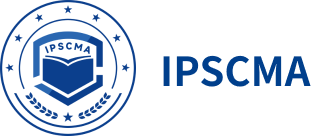From Procter & Gamble to Huawei: How Top Companies Build Efficient Procurement Systems
Procurement, a seemingly simple word, is the core lifeblood of business operations.
When we talk about enterprise cost control, few people realize that the optimization of the procurement process can often bring the most direct profit improvement. According to McKinsey's research, a 5% optimization of procurement costs can directly translate into a 15%-30% profit increase for enterprises. That's why the world's top companies see procurement management as a core part of their strategy.
Procter & Gamble's "Supplier Collaborative Innovation" model
Procter & Gamble's (P&G) procurement system is the industry benchmark. They no longer see suppliers as simple source providers, but as innovation partners. Through the Connect Develop, P&G has established strong connections with more than 150,000 suppliers around the world, and more than 50% of innovation comes from external collaborations each year.
For example, P&G collaborated with packaging suppliers to develop eco-friendly packaging technology that not only reduced material costs by 30%, but also improved the brand's environmental image. This procurement concept of "creating a win-win situation" allows P&G to maintain a leading position in the fierce market competition.
Toyota's "just-in-time procurement" revolution
Toyota's JIT (Just In Time) procurement system has revolutionized the procurement logic of the manufacturing industry. Through accurate demand forecasting and supply chain collaboration, Toyota has increased its inventory turnover rate to three times the industry average and reduced inventory costs by more than 40%.
What's even more impressive is that Toyota not only applies the JIT system, but also helps its core suppliers to optimize the production process together. This dual strategy of "procurement empowerment" has enabled Toyota to show amazing resilience in the face of the global supply chain crisis.
Huawei's "strategic procurement" thinking
Huawei's procurement management has been hailed as a model for Chinese enterprises. In the face of the complex international situation, Huawei has built a "1 N" diversified procurement system to ensure that at least 3-5 suppliers are available for key components.
What is more noteworthy is Huawei's "strategic reserve" mechanism. For core components, Huawei not only considers the current price, but also attaches more importance to long-term supply stability, and is willing to pay a premium in exchange for supply chain security. This forward-thinking approach enables Huawei to maintain business continuity in the face of external pressures.
Amazon's data-driven purchasing decisions
Amazon has introduced big data analysis into procurement management and established the world's leading intelligent procurement system. By analyzing more than 1 billion transactions, Amazon can accurately predict fluctuations in product demand and adjust purchasing strategies accordingly.
This data-driven purchasing decision has enabled Amazon to achieve an inventory turnover rate that is 5 times higher than that of traditional retailers, while maintaining a 99.9% product availability rate. In today's increasingly fierce competition in e-commerce, this ability to accurately purchase has become Amazon's core competitive advantage.
Professional procurement talents: the invisible promoter of enterprise success
With the increasing complexity of procurement management, professional procurement talents have become a key resource for enterprise competition. An experienced purchasing manager can not only help enterprises save costs, but also build a stable and efficient supply network to provide guarantee for the long-term development of enterprises.
In today's increasingly uncertain world, procurement professionals with systematic procurement knowledge and international vision are particularly valuable. They are able to develop flexible procurement strategies and reduce supply chain risks in the complex international trade environment.
Future Trends in Procurement Management
Looking ahead, there will be four major trends in procurement management:
1. Digital transformation: AI and big data analytics will reshape the procurement decision-making process
2. Sustainable procurement: Environmental and social responsibility will become important components of procurement standards
3. Risk management: Global supply chain resilience will become the core of procurement management
4. Strategic synergy: The procurement department will be more deeply involved in the strategic planning of the enterprise
For professionals who want to continuously improve in the field of procurement, it is important to systematically learn advanced procurement concepts and practices. Through the construction of professional knowledge system, procurement personnel can transform from the traditional role of "inquiry and price comparison" to the creator of enterprise strategic value.
In this era of the Internet of Everything, procurement management is no longer a simple "buying things", but a strategic hub that connects internal and external resources of enterprises and creates comprehensive competitive advantages. Those procurement managers who can master professional procurement knowledge and have an international perspective will become indispensable core talents for the enterprise. Victory stealth weapon.
